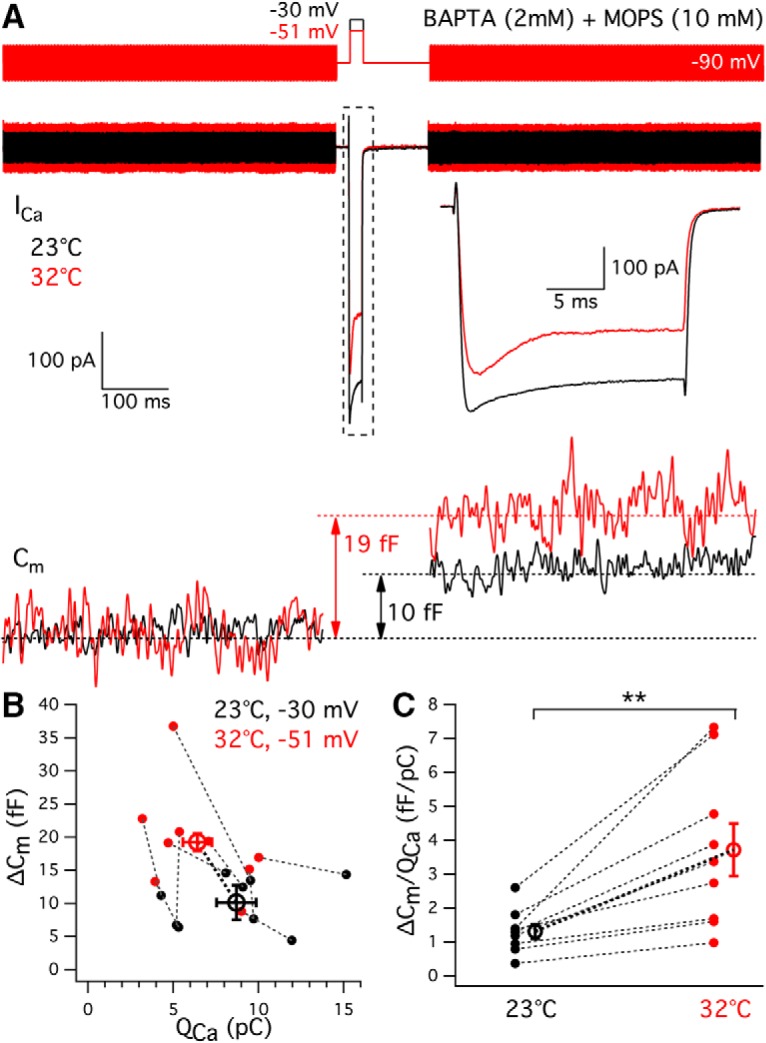Figure 9.

Exocytosis increases at high temperature, even when Ca2+ influx is reduced. A, The depolarization potential at high temperature was adjusted between −45 and −55 mV to elicit the same or less amount of Ca2+ influx to that at room temperature. To exclude temperature effects on pH or Ca2+ buffering, hair cells were patched with internal solution containing pH-insensitive Ca2+ buffer BAPTA (2 mm) and a different pH buffer MOPS (10 mm). Averages of Ca2+ currents (ICa) from nine hair cells triggered by depolarization to −30 mV at 23°C (black) and to −51 ± 2 mV at 32°C (red). The ICa was expanded in time scale from the one in a dashed line box. The membrane capacitance change (ΔCm) was 10 fF at 23°C (black) and 19 fF at 32°C (red). B, ΔCm versus QCa from individual hair cells depolarized to −30 mV at 23°C (black) and to −51 mV at 32°C (red). Data points connected by a dashed line were recorded from the same hair cell. C, Exocytosis efficiency (ΔCm/QCa2+) increased from 23°C (black) to 32°C (red; p = 0.0042, n = 9). **p < 0.01.
